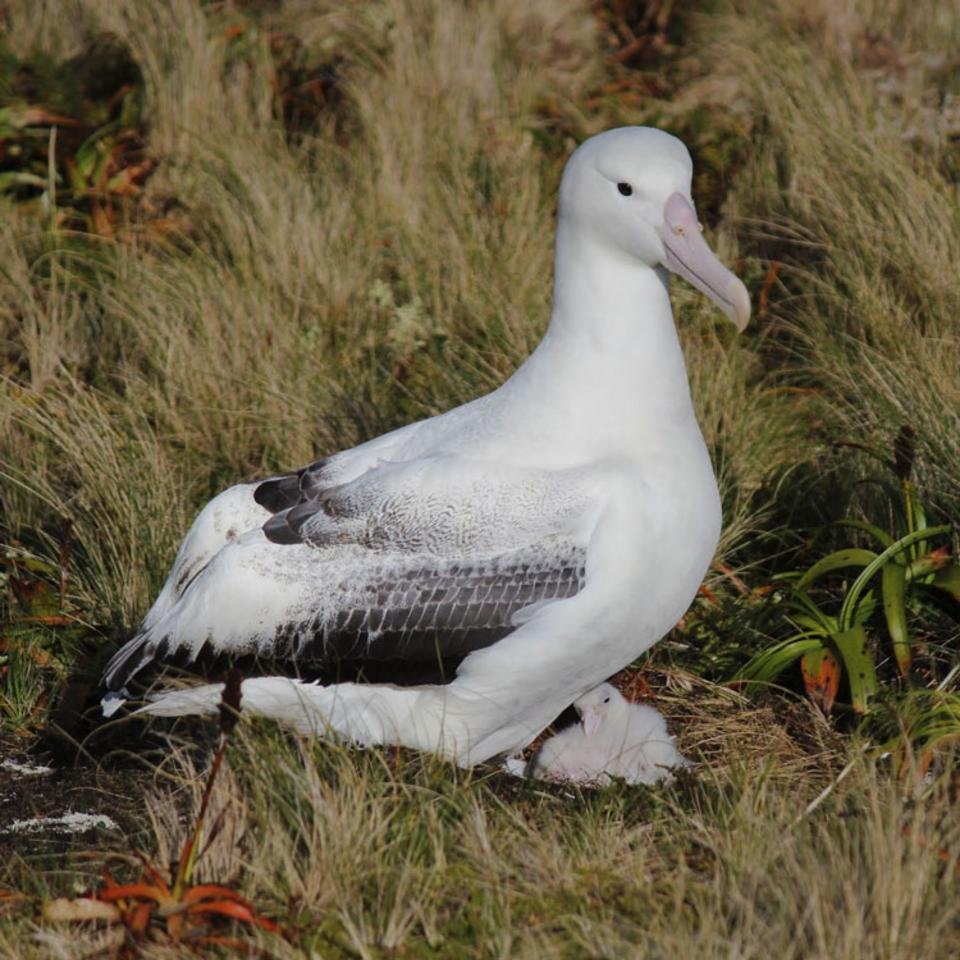In this retrospective to mark the day, Edward takes a look at some of the work he and Dragonfly have done to understand and protect these superb birds.
“New Zealand is a place where albatross like to breed. They fly off around the Southern Ocean – but they have to watch out because of the danger of being caught in fishing lines.”
Albatross chase the baited hooks in longline fisheries and hang around at the back of trawlers to feed on the fish waste, but can get caught up in trawl gear, especially the fast-moving wire ropes.
“It’s thousands of birds each year. Bycatch is a big issue for albatross.”
Ed says he got started by helping out a friend, Susan Waugh, with fieldwork at an albatross breeding colony on Campbell Island for 6 weeks in 1996.
“We were recording when the parents came to feed and taking samples from some chicks – this involved tipping them upside down and collecting what came out. I had this lovely cable-knit fisherman’s jersey but after all that fish I never got to wear it again!”
Susan then asked Ed to help her with analysing some bycatch data for what is now the Ministry for Primary Industries (MPI). “Based on that contract, I started Dragonfly!”
The analysis was about how effective different methods were at preventing bird bycatch, and the data showed a clear winner. “When that mitigation was introduced into our fisheries, it had a really big impact and reduced bycatch to about half. That was great.”
Another significant piece of work was creating a seabird risk assessment for MPI.
“It put all fisheries and all seabirds together so you could see where the biggest impacts were happening to which populations in which fisheries. That gave people an opportunity to prioritise action to where the risk was greatest.”
Because protected species bycatch (including albatross) in fisheries is a topic of such huge public interest, Dragonfly worked with MPI to make the data freely available on its website. See Protected species bycatch in New Zealand fisheries.
“I think albatross are one of those species that connect us to other countries. The challenge for New Zealand is that when they leave our waters, albatross are exposed to different risks outside our control. There’s been a real push recently by New Zealand to be active globally because the conservation of our species isn’t just our business – we have to work with the other nations that are fishing wherever the birds go to.”
World Albatross Day was begun by ACAP to raise awareness about the bird’s ongoing conservation crisis, and marks 20 years since the organisation began.
“ACAP provides an important opportunity to get governments together to talk and share information. It has a strong science focus and is really good at promoting best practice for fishers and methods that have been shown to work rather than just good ideas. Happy birthday :-).”
Read more about Dragonfly’s work with albatross:
A partnership with Chile for albatross risk assessment, a secondment that was part-funded by ACAP.


